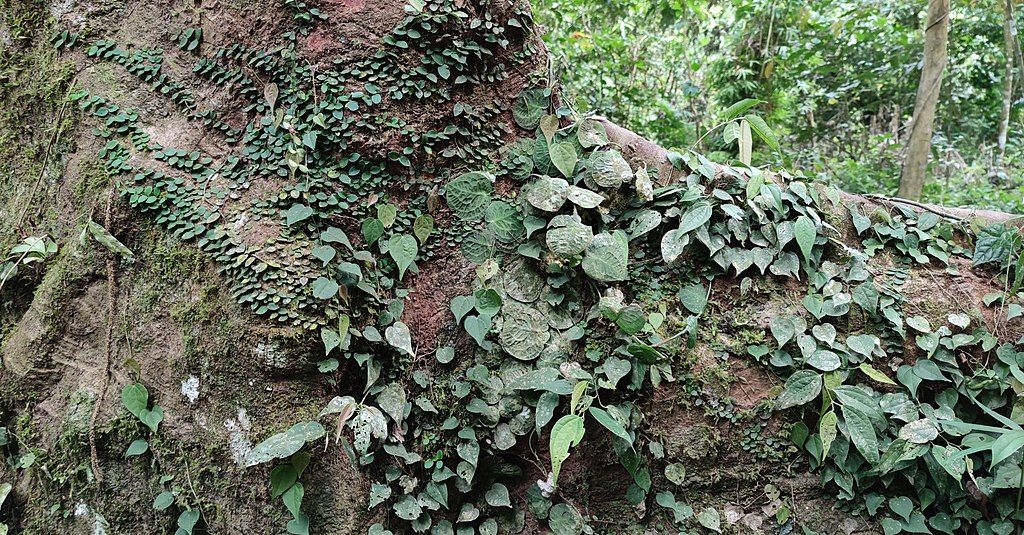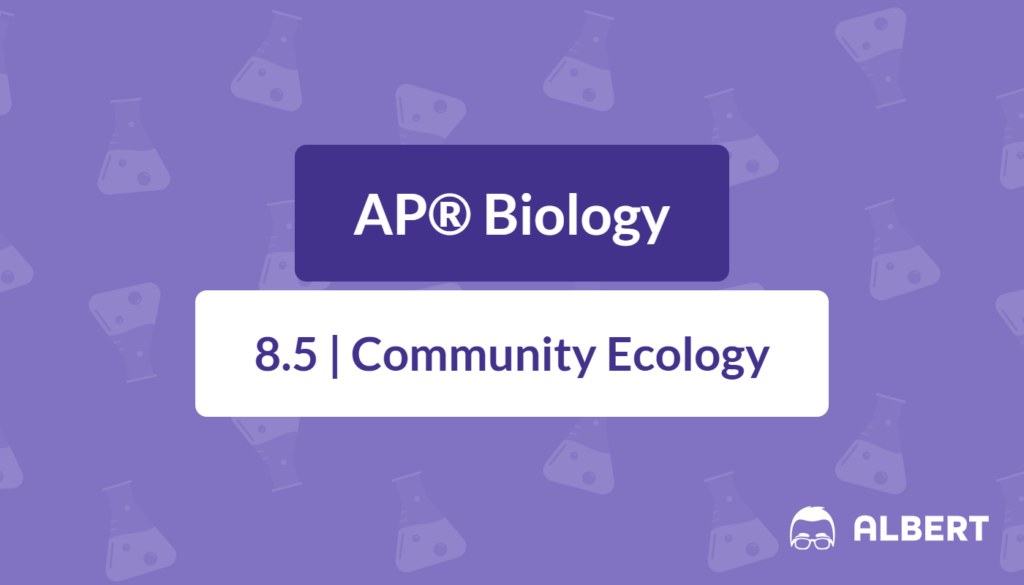What We Review
Introduction
Community ecology explores how different species interact and form complex networks within a shared environment. These connections help maintain balance and contribute to the survival of individual species. Therefore, understanding ecological communities is a key part of AP® Biology.
Ecological communities are more than just groups of organisms. They involve patterns of species presence, how these species depend on each other, and how energy and resources flow through their environment. Next, this guide will introduce the basic ideas of community ecology, explain how species interact, and provide examples that simplify key concepts.
What Is an Ecological Community?
An ecological community consists of all the interacting species living in the same location at the same time. The term “what is an ecological community” often appears on exams, reminding students to think of the different organisms in a particular habitat and how they rely on each other. Community ecology focuses on how these organisms are distributed, how many species there are, and how they live together.
Species composition refers to the types of organisms present. Species diversity is the combined measure of how many different species there are and how many individuals of each species exist. This diversity can affect the stability of the community, because a community with a higher diversity is often more resilient to changes.
Example: A Local Forest Community
Imagine a forest with trees (oaks, maples, pines), animals (deer, rabbits, foxes), and a variety of insects and fungi. Each species occupies its own niche and interacts with others in unique ways.
Step-by-Step Explanation
- Observe the forest: Look at dominant species, such as tall trees and common animals.
- Identify roles: Trees provide shelter, fungi decompose leaf litter, and insects pollinate flowers.
- Notice interactions: Foxes may control rabbit populations, while birds disperse seeds in the area.
- Recognize diversity: A high number of plant and animal species typically supports more complex interactions.
Practice Problem
List three common species in your local forest or park, and describe at least one interaction between each species and the environment (e.g., competition, providing food, or shelter).
- Make an observation of local species (for example, squirrels, oak trees, and earthworms).
- Explain their roles (squirrels gather seeds, oak trees provide shade and seeds, and earthworms aerate the soil).
- Identify an interaction (squirrels disperse seeds that grow into new oak trees).
The Structure of a Community
A community’s structure usually depends on how many species are present and the relative abundance of each species. Species composition is about who is in the community, while species diversity (including measures of richness and evenness) shows how balanced the community is.
Diversity can be measured using the Shannon diversity index, a common formula in AP® Biology. The formula is:
H = - \sum (p_i \ln(p_i))where p_i is the proportion of each species in the community.
Example: Analyzing a Coral Reef Community
Coral reefs often have many species of fish, corals, and invertebrates. Suppose a reef has:
- Species A: 50 individuals
- Species B: 30 individuals
- Species C: 20 individuals
Total individuals: 50 + 30 + 20 = 100
Step-by-Step Solution Using the Shannon Index
- Calculate proportions:
- p_A = \frac{50}{100} = 0.5
- p_B = \frac{30}{100} = 0.3
- p_C = \frac{20}{100} = 0.2
- Compute each term:
- p_A \ln(p_A) = 0.5 \ln(0.5)
- p_B \ln(p_B) = 0.3 \ln(0.3)
- p_C \ln(p_C) = 0.2 \ln(0.2)
- Sum the terms and multiply by -1:
- H = - \left[, (0.5 \ln(0.5)) + (0.3 \ln(0.3)) + (0.2 \ln(0.2)) \right]
- Interpret the result: A higher H value suggests greater diversity.
Practice Problem
Using the same formula, calculate the Shannon diversity index for a community that has:
- Species X: 10 individuals
- Species Y: 10 individuals
- Species Z: 80 individuals
- Find the total population.
- Compute proportions of each species.
- Plug values into H = - \sum (p_i \ln(p_i)).
- Explain whether this suggests high or low diversity.
Species Interactions in Communities
All species within a community influence each other in some way. These interactions include:
- Competition: When two species compete for limited resources like food or shelter.
- Predation: When one species (predator) hunts and eats another (prey).
- Symbiosis:
- Mutualism: Both species benefit.
- Commensalism: One species benefits while the other remains unaffected.
- Parasitism: One species benefits while the other is harmed.

Example: Wolves and Deer
Consider a forest where wolves prey on deer.
Step-by-Step Explanation
- Wolves locate deer as a food source.
- Wolves reduce the deer population by hunting.
- Deer populations decrease, which can reduce browsing on young trees.
- Plant life recovers, supporting more insects and small mammals.
- Wolves indirectly impact plant and insect diversity by controlling deer.
Practice Problem
Think of a predator-prey interaction near your home (e.g., hawks and small rodents). Describe how the predator impacts the prey and how this might affect other parts of the community.
- Identify a common predator (hawks) and prey (mice).
- Explain how hawks reduce mouse numbers.
- Predict possible benefits: fewer mice could mean more seeds survive to sprout.
- Note if other species gain from the presence of mice or seeds.
How Interactions Influence Community Structure
Populations within a community do not remain constant. Changes can happen suddenly (fires, storms) or gradually over time (succession). After a disturbance, organisms return in stages, often starting with small plants and eventually leading to a mature community.
Example: Forest Recovery After a Wildfire
A wildfire may destroy much of the vegetation.
Step-by-Step Explanation
- Immediately after the fire, only a few pioneer species (like grasses) survive.
- Seeds from nearby areas start to grow, helped by nutrient-rich ash.
- Shrubs and fast-growing trees appear next, creating shade.
- Eventually, larger trees can dominate, restoring the original forest structure.
Practice Problem
Describe how a local community might recover if a strong thunderstorm knocks down many large trees.
- Identify the initial community (trees, understory plants, and soil).
- Predict which pioneer species might appear first.
- Explore how light availability changes once large trees fall.
- Explain how species diversity might evolve over time as plants regrow.
Energy Flow in Communities
Energy enters most communities through photosynthesis, where plants and algae convert sunlight into chemical energy. Therefore, trophic levels are helpful ways to visualize how energy moves through an ecosystem:
- Producers: Plants and algae that make their own food.
- Primary Consumers: Herbivores that eat producers.
- Secondary Consumers: Carnivores that feed on herbivores.
- Tertiary Consumers: Top predators that eat other carnivores.
- Decomposers: Break down dead organisms, returning nutrients to the soil.
Example: A Food Web in a Savanna
In an African savanna, grasses (producers) are eaten by zebras and gazelles (primary consumers). Lions (secondary consumers) eat these herbivores, while vultures and fungi act as decomposers.
Step-by-Step Explanation
- Identify producers: Grasses capture sunlight to make energy.
- Note primary consumers: Zebras and gazelles eat grasses.
- Recognize secondary consumers: Lions feed on zebras and gazelles.
- Incorporate decomposers: Vultures and fungi recycle nutrients.
Practice Problem
Construct a simple food web for a freshwater pond with algae, small fish, and a bird species. Include a decomposer like bacteria or fungi.
- Set algae as producers.
- List fish that consume algae (primary consumers).
- Add birds that eat fish (secondary consumers).
- Place bacteria as decomposers at every level.
The Importance of Cooperation and Competition
Cooperation helps species share resources like food or shelter, especially when conditions are harsh. However, competition arises when resources become scarce, forcing different species (or individuals within the same species) to fight for survival. Both cooperation and competition shape the layout and stability of communities.
Example: Grassland Plants Competing for Sunlight
In a grassland, plants grow close together and may block light from each other.
Step-by-Step Explanation
- When resources (sunlight) are limited, taller plants capture more sunlight.
- Shorter plants may struggle to get enough energy.
- Some plants adapt by growing quickly or producing more seeds.
- Over time, the community’s plant composition reflects those that successfully compete.
Practice Problem
Pick two species in your garden (for instance, sunflowers and tomato plants). Explain how they might cooperate or compete for resources such as sunlight, water, or pollinators.
- Identify resource needs (both require sun, nutrients, and pollination).
- Decide if there is direct competition (tall sunflowers might shade tomato plants).
- Look for any cooperative benefits (flowers can attract pollinators that help both).
Quick Reference Vocabulary
| Term | Definition |
| Ecological Community | All interacting species in a shared environment |
| Species Composition | The types of species present in a community |
| Species Diversity | A measure of how many species there are and how even their populations are |
| Competition | When organisms compete for limited resources |
| Predation | When one organism (predator) consumes another (prey) |
| Mutualism | A symbiotic relationship where both species benefit |
| Commensalism | A symbiotic relationship where one species benefits, and the other is unaffected |
| Parasitism | A symbiotic relationship where one species benefits and the other is harmed |
| Trophic Levels | Levels in a food chain that represent how energy is transferred |
| Food Web | A network of interlinked food chains in an ecosystem |
| Succession | The process of gradual change in a community after a disturbance |
| Shannon Index (H) | A formula measuring species diversity in an ecosystem |
Conclusion
Ecological communities represent the foundation of all life on Earth. By understanding interactions such as competition, predation, and cooperation, it becomes clearer why each species plays an important role in its environment. Therefore, lessons learned in community ecology are essential for understanding biodiversity, conservation, and the overall balance of nature.
It is helpful to explore real-world examples and practice measuring diversity. Students are encouraged to continue researching these topics and observing local ecosystems to see community ecology in action.
Sharpen Your Skills for AP® Biology
Are you preparing for the AP® Biology test? We’ve got you covered! Try our review articles designed to help you confidently tackle real-world math problems. You’ll find everything you need to succeed, from quick tips to detailed strategies. Start exploring now!
Need help preparing for your AP® Biology exam?
Albert has hundreds of AP® Biology practice questions, free response, and full-length practice tests to try out.








